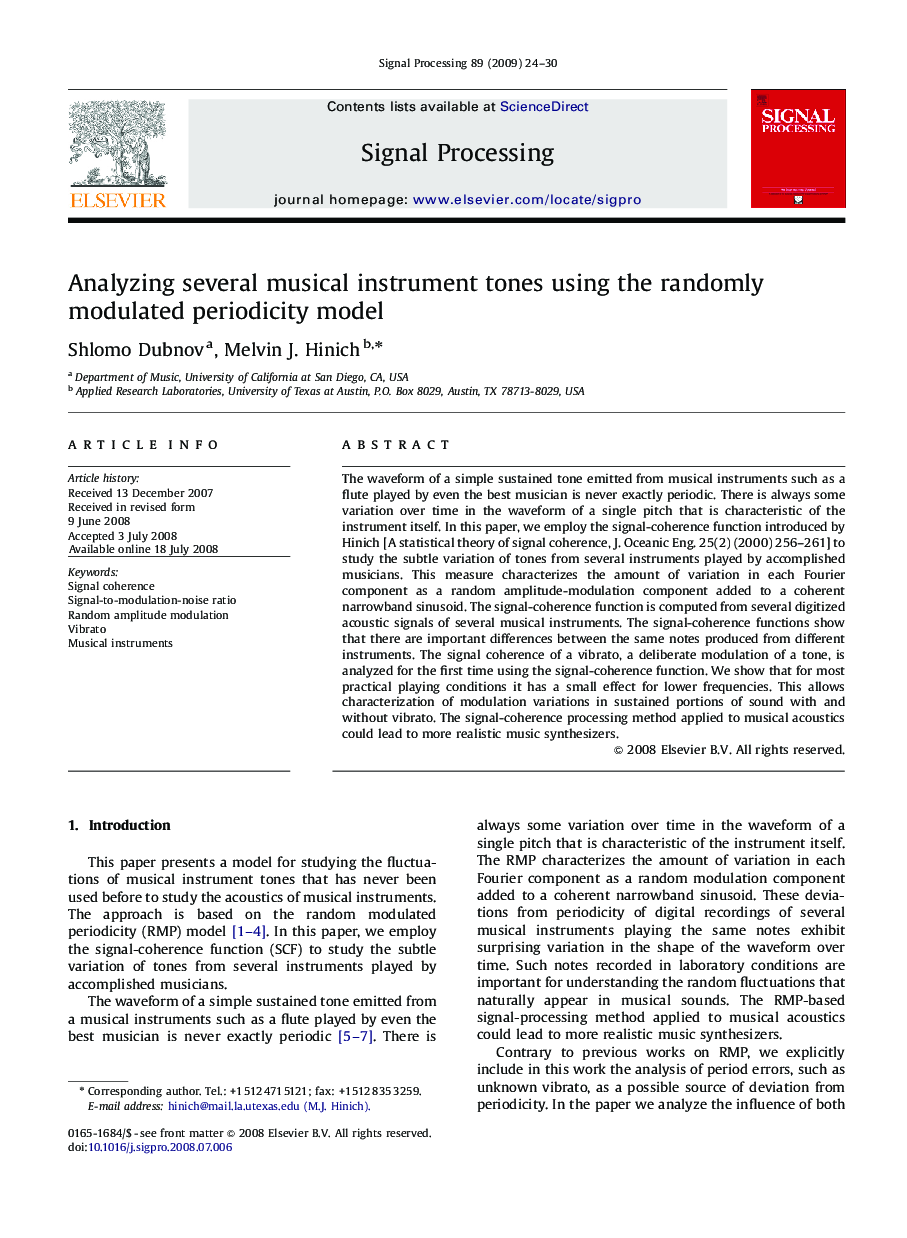| Article ID | Journal | Published Year | Pages | File Type |
|---|---|---|---|---|
| 566902 | Signal Processing | 2009 | 7 Pages |
The waveform of a simple sustained tone emitted from musical instruments such as a flute played by even the best musician is never exactly periodic. There is always some variation over time in the waveform of a single pitch that is characteristic of the instrument itself. In this paper, we employ the signal-coherence function introduced by Hinich [A statistical theory of signal coherence, J. Oceanic Eng. 25(2) (2000) 256–261] to study the subtle variation of tones from several instruments played by accomplished musicians. This measure characterizes the amount of variation in each Fourier component as a random amplitude-modulation component added to a coherent narrowband sinusoid. The signal-coherence function is computed from several digitized acoustic signals of several musical instruments. The signal-coherence functions show that there are important differences between the same notes produced from different instruments. The signal coherence of a vibrato, a deliberate modulation of a tone, is analyzed for the first time using the signal-coherence function. We show that for most practical playing conditions it has a small effect for lower frequencies. This allows characterization of modulation variations in sustained portions of sound with and without vibrato. The signal-coherence processing method applied to musical acoustics could lead to more realistic music synthesizers.
